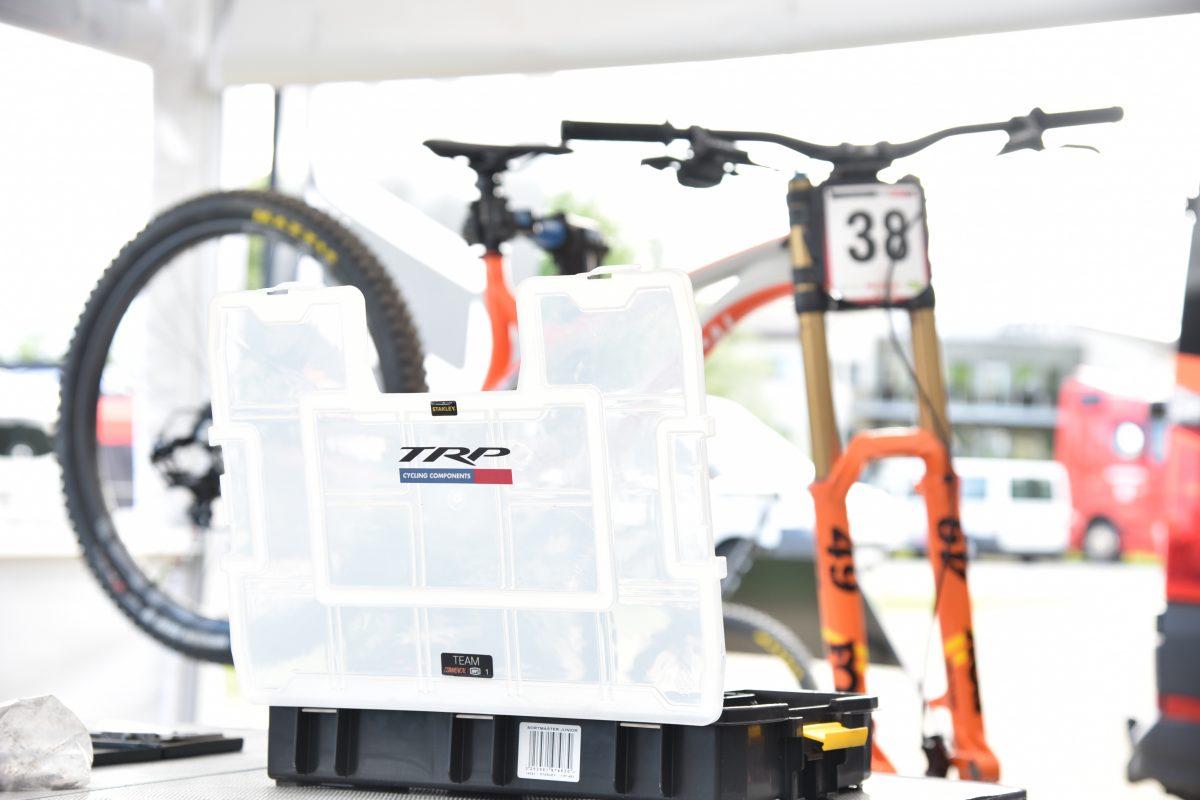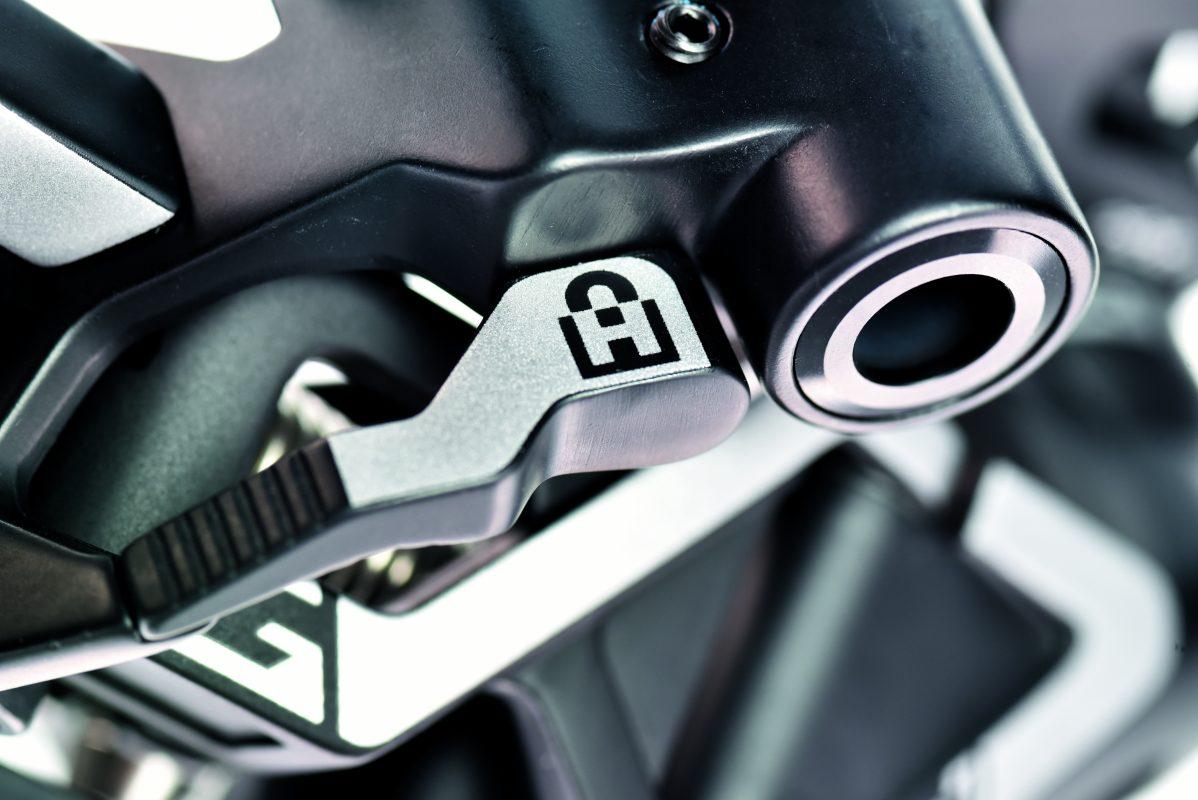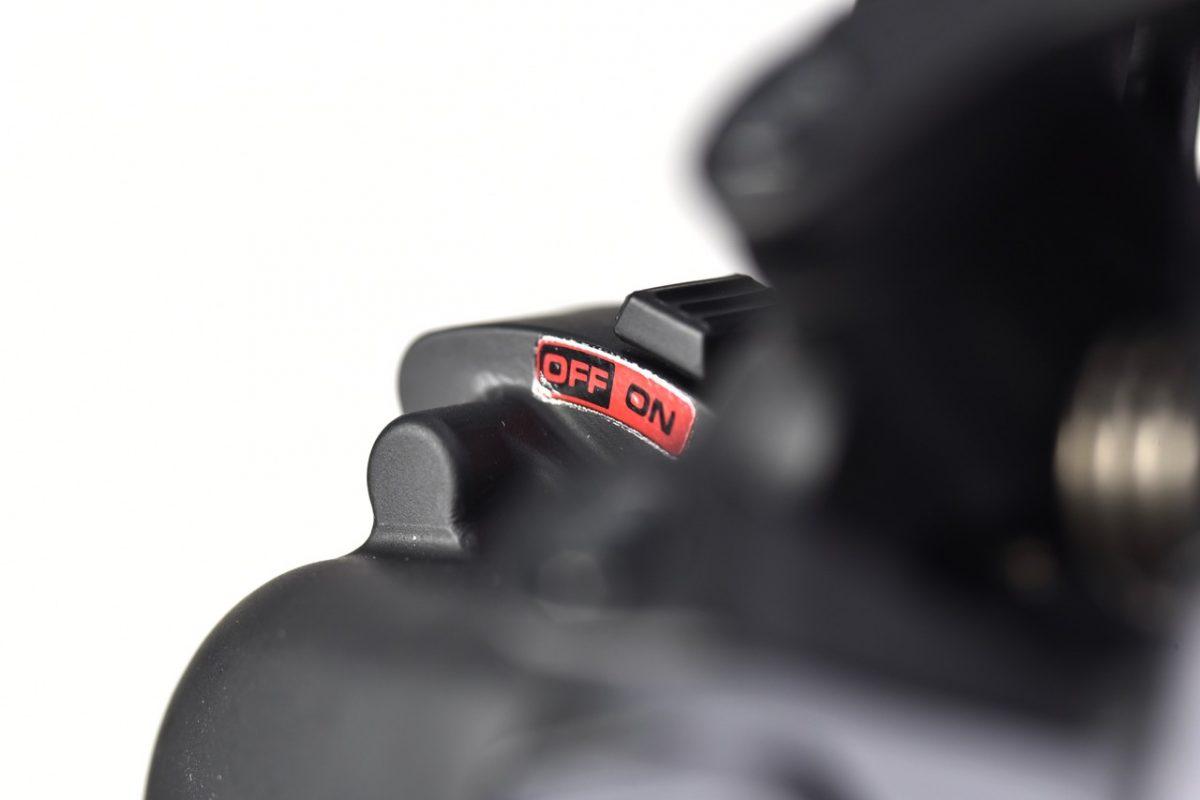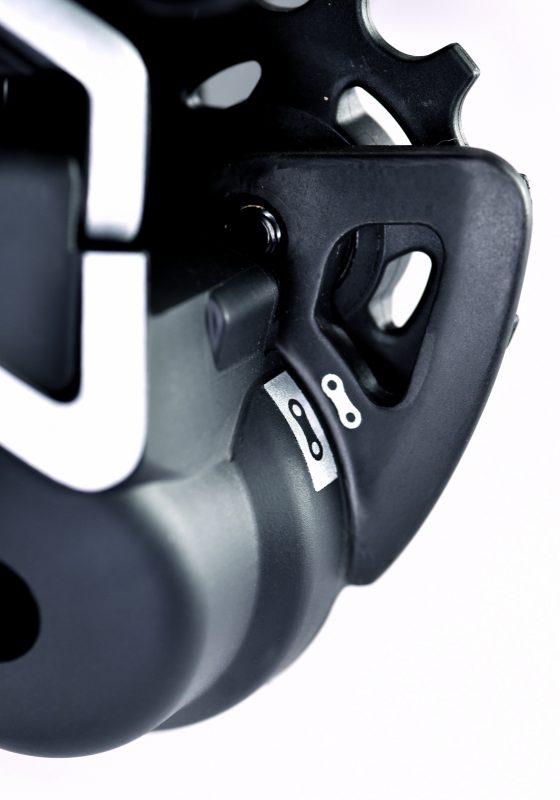You shouldn’t have to adjust the TRP ratchet clutch any further when it’s new. “Depending on your suspension and travel, you can adjust it – otherwise, you can carefully readjust the friction after extended use. Be careful to work with small 1/8 turns,” Hall says. “The factory setting is perfectly fine.”
ATTENTION – PLEASE ALWAYS HAVE THE HALL LOCK LEVER OPEN WHEN INSTALLING OR ADJUSTING THE REAR DERAILLEUR – THANK YOU.
Out of the box, the Hall Lock is loose and should be adjusted. “After I install the rear derailleur and adjust everything, I tighten the set screw to the point where it’s snug,” Hall says. “I want it to be as tight as possible while still being able to operate the Hall Lock lever with my fingers,” he says. “That’s the ‘sweet spot.’ Everything is tight and clean, it makes less noise, but if it gets hit by a rock or branch, it can still move for safety.”
When sizing the chain, John suggests, “Run the chain around the smallest cog on the cassette through the rear derailleur. Watch the chain length indicator, then use the closest link that puts a little pressure on the clutch.” Please pay attention to the changing distance between the bottom bracket and rear derailleur on long-travel bikes.
When adjusting the ratchet clutch and Hall Lock lever tension, less is more – “The smaller you make the adjustments, the better,” Hall says. “If you think you need a 30-degree turn, start with a 15-degree turn, especially on the clutch, because you’re adjusting two bolts. If you do a 15-degree turn at a time, it’s like a 30-degree turn for the system, which is a lot. After unpacking, the clutch should not be adjusted further. After extended use, you can readjust the friction accordingly.”
What can go wrong? Check the Hall Lock lever after a fall – If you ever fall or hit the TRP rear derailleur on a rock, the Hall Lock can move even if it is engaged to avoid catastrophic damage to the rear derailleur. In this case, it is important to briefly check the rear derailleur and Hall Lock lever before continuing to ride. “Always loosen the Hall Lock lever so that the rear derailleur B-bolt sits neatly back on the B-plate, then close the Hall Lock lever again,” Hall says. “In rare cases, the rear derailleur mounting bolt might actually come loose if you just close the Hall Lock lever again. In none of our crashes has the rear derailleur come loose. It’s just one of those things that you should be aware of. So take a breath, check everything, then go full throttle.”











